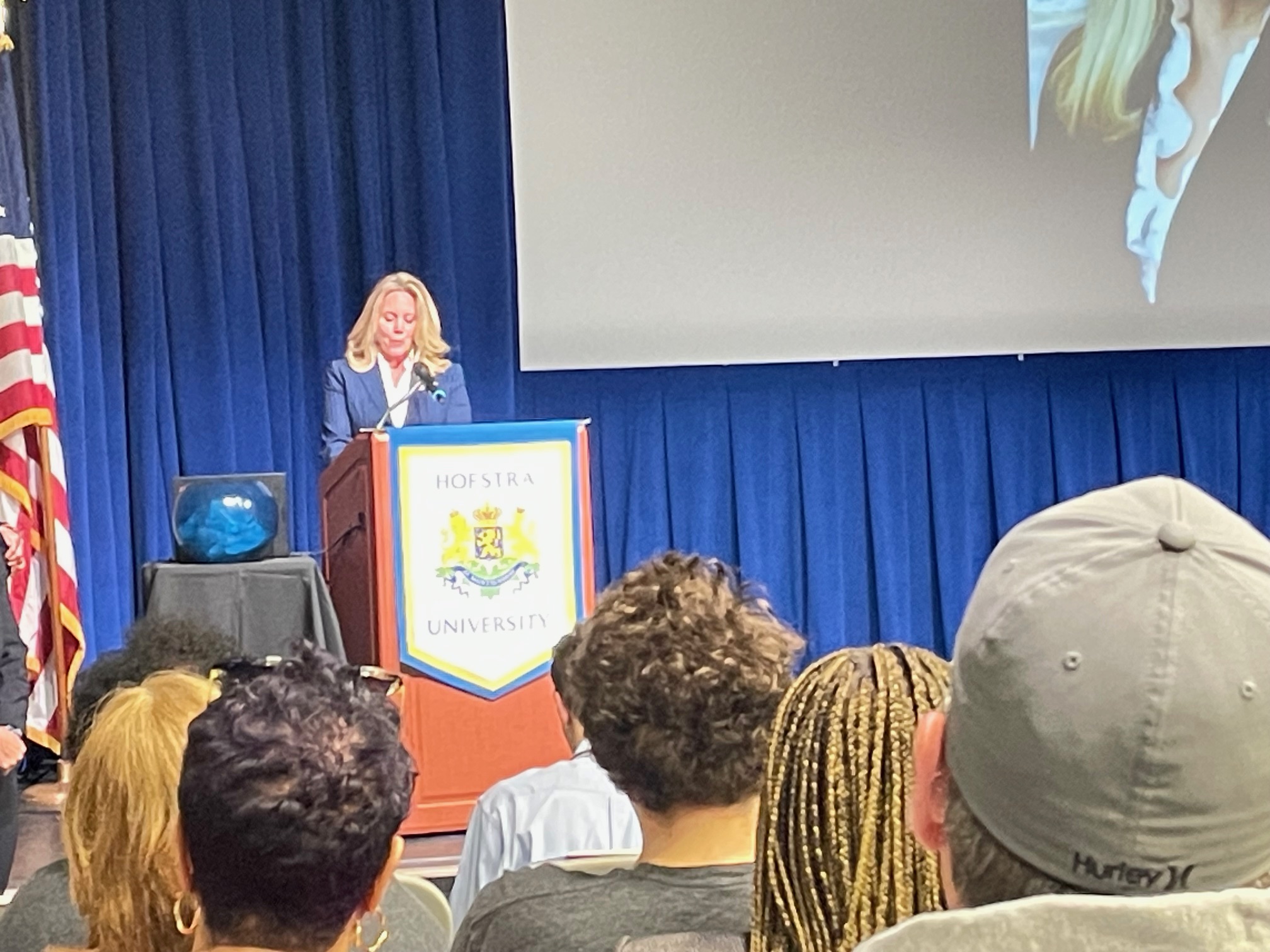(WASHINGTON) — Melissa Chiu, director of the Smithsonian’s Hirshhorn Museum and Sculpture Garden, has guided the museum through a period of growth and transformation. Recently, she talked to The Click about the $68 million renovation of the museum’s iconic sculpture garden, set to reopen next fall. According to Chiu, the new space aims to change the way visitors experience art on the National Mall.
This interview has been edited for clarity and length.
The Click: The sculpture garden is undergoing its first major renovation in many years. How do you see this project shaping the future of the museum and its role on the National Mall?
Melissa Chiu: The importance of our new design was centered on our visitorship and our desire to provide the most generous opportunity for visitors to spend time with modern and contemporary art. We realized there were many more visitors on the National Mall than at the sculpture garden entrance, so we expanded the garden entrance to allow greater access. We also wanted to create more distinct and intimate galleries for the appreciation of our modern collection, which is human-scaled and benefits from closer viewing. The new design includes an open field gallery that accommodates larger works, reflecting the scale contemporary artists are working in today. This allows us to showcase more of that kind of work, which is part of our mission.
The Click: Architect Hiroshi Sugimoto has brought a distinct vision to the redesign. What drew you to his approach, and how do you feel his design aligns with your vision for the museum’s future?
Chiu: Hiroshi Sugimoto held his major survey here many years ago and was one of the first artists to truly appreciate the building’s architecture. He removed many of the temporary modifications and walls, allowing us to see the museum and gallery in the round. From that understanding, we commissioned him to redesign our lobby with new furniture and a coffee bar. Although best known as a photographer, his approach to space and to creating environments where people can comfortably appreciate art were qualities we wanted to bring into the sculpture garden. He is an artist first, but also a creative person who thinks about museums and art spaces.
The Click: The renovation had sparked conversation among preservationists and community members. From your perspective, what do you think is most often overlooked about the goals of the project?
Chiu: As part of our planning process, we were required to obtain approval from two agencies, the Commission of Fine Arts and the National Capital Planning Commission. This process involved public consultation meetings, where we presented updates and received feedback. Some members of the public shared ideas for the sculpture garden, with most focusing on maintaining the existing garden. That was not possible due to significant flooding and other infrastructure issues around the concrete walls. Everything had to be replaced, so it made no sense to replicate exactly what had been there before. We worked from a mission-driven brief about what a sculpture garden for the 21st century should be. Through the consultation and approval process, we made proposals, received feedback, and incorporated several modifications. While it has been described in the media and by some as a controversy, from our perspective it was a process any project of this scale goes through.
The Click: When visitors walk through the renewed sculpture garden for the first time in 2026, what do you hope they will feel or take away from the experience?
Chiu: Our hope with the new sculpture garden is that viewers will encounter art in a natural environment, specifically created for the enjoyment of our modern and contemporary art collection. In the best possible case, it would be a space for contemplation, reflection and quiet moments with art.


